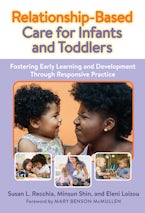Acknowledgments1. Introduction: Ways of Thinking About, Talking About, and Taking Steps Toward Social Inclusion
The Many Faces of Inclusion
The Need to Broaden the Research Framework
Traditional Ways of Looking at Inclusion
A Challenge to the Dominant Discourse about Inclusion
An Inclusive Learning Environment: Classroom Components and Teacher Competencies
Organization of the Book
2. Welcoming Children with Disabilities to the Table: Classroom Components that Value Individual Differences
What Researchers Say about the Social Competencies of Young Children with Special Needs
Positive Responses to Diversity of Ability
Mario's Story: Meeting the Needs of a Child with Cognitive Delays Who Is Motivated to Play with Others
Adam's Story: Meeting the Needs of a Child with Physical Disabilities Who Is Highly Motivated to Move Independently
Joey's Story: Meeting the Needs of a Child with Social Challenges Who Demonstrates Unusual Social Behaviors
Final words: Bridging Developmental Differences
How Can You Make a Difference?Questions for Further Reflection
3. Rethinking Social Inclusion: Classroom Components That Empower All Children
What Other Researchers Say about Social Inclusion of Children with Challenging or Inappropriate Behaviors
Ira's Story: Dealing with a Child Who Is Marginalized in the Classroom
Cody's Story: Responding to an Aggressive Child
Abigail's Story: Dealing with a Quiet Child Who Loses the Teachers' Attention'
Final Words: ''Moving toward Inclusive Classrooms That Value Everyone
How Can you Make a Difference? Questions for Further Reflection
4. Becoming a Teacher that Makes a Difference: Examining Values, Reconsidering Expectations, and Developing Competencies to Transform Classroom Practice
Challenges of Inclusion
What Other Researchers Say about the Role of Teachers in Facilitating Social Interactions in Early Childhood Classrooms
A Reconceptualization of Early Childhood Inclusive Teaching
The Six Teacher Competencies for an Inclusive Classroom
Teacher Competencies as a Framework for Transforming Teaching and Learning in the Early Childhood Classroom
5. Early Childhood Classrooms as Inclusive Learning Communities: Our Visions for the Future
Synthesizing the Components and Competencies Through a Relationship Lens
Overarching Principles for Inclusive Practice
Bringing Early Childhood Inclusion to Life: Applying the Classroom Components and Teacher Competencies
Where Do We Go from Here? Implications for Teacher Preparation and Ongoing Teacher Development
References
Index
About the Authors

